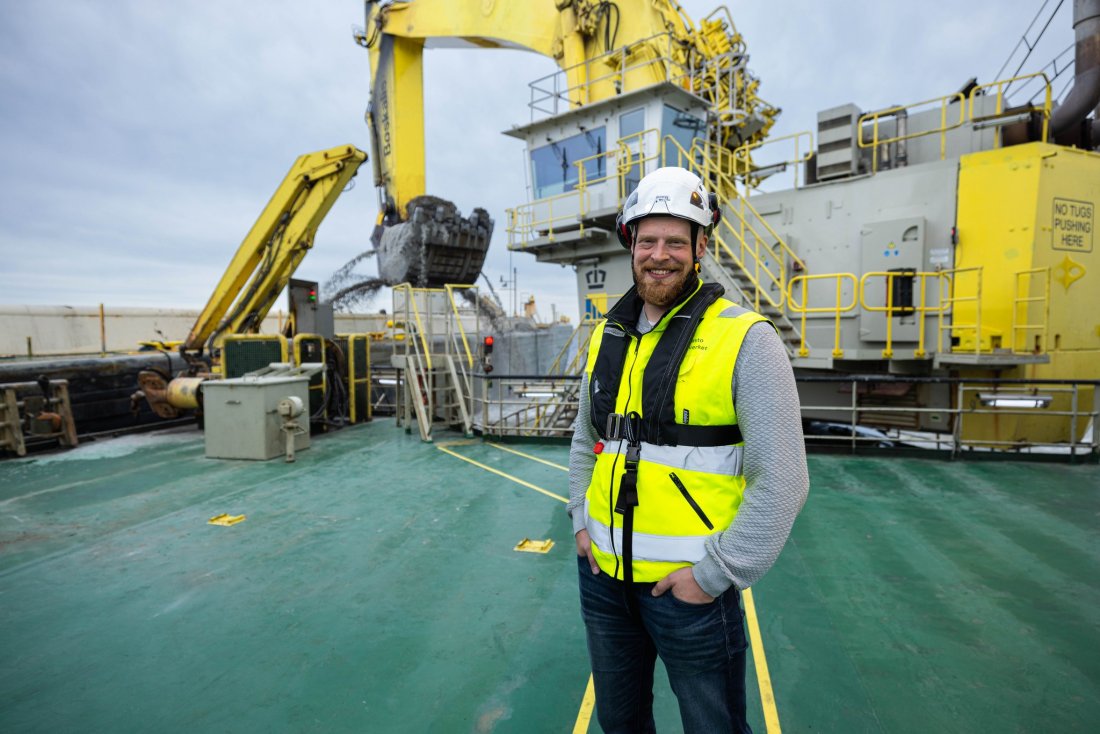Image: Pasi Kivioja, Project Manager at the Finnish Transport Infrastructure Agency, has a good reason to smile: the deepening of Kemi Ajos fairway was completed ahead of schedule.
In Kemi, the need to deepen the Kemi Ajos arose from local trade and economy. At first, the project was run hand in hand with the new bioproduct mill planned for Kemi and the potential mining projects in the Kolari region with their need to transport enriched products.
The deepening of the fairway enhances the cost-effectiveness of traffic operating in the area and thus reduces the environmental burden caused by traffic. The bigger the fairway, the larger ships can navigate it. And the larger the ships, the more cargo they can carry.
“The environmental burden per unit transported and per journey is lower, and so are the costs. Maritime safety will also improve as the new fairway is deeper and wider,” says Elisa Mikkolainen, Head of the Waterways Department.
In Kemi, the Ajos fairway was deepened from 10 metres to 12 metres. The deepening by two metres is directly reflected in the ability of vessels to increase their cargo sizes.
“The additional draught of two metres makes it possible to increase the cargo sizes from 20,000 tonnes to as much as 70,000 tonnes. In Kemi, the benefits are particularly visible in transports to Asia. If needed, those making shorter journeys in Europe will also benefit,” says Project Manager Pasi Kivioja.
28 dredging sites and massive machinery
In waterway construction, the importance of data becomes emphasised as it is not visible to the naked eye how construction progressed out in the field. One must trust that, for example, sounding and drilling data, and dragging provide enough information to guarantee that the project progresses as planned. Modelling tools used in road and railway projects are also in use.
“Devices have been developed for examining fairways to reveal what is happening under the sea and in areas out of visual range. For example, when examining the need to deepen the Ajos fairway, information was collected on what kinds of vessels and how many of them were using the fairway,” Mikkolainen says.
If the need for data was great, so were the machines used in the deepening work. There was a total of 28 sites that were deepened along the Kemi Ajos fairway. Working them required massive machinery.
Depending on the soil composition, the machinery used in the project included suction dredgers, backhoe dredgers and grab dredgers. Suction dredgers were used for soft and loose soil, whereas bucket dredgers were needed for moraine and clay-based soils.
“The grab bucket dredger is a slightly older type of machine, but its greatest advantages are its versatility and ability to reach high dredging depths. At the end of the project, a large grab bucket was replaced with a big grapple that enabled lifting even large boulders from the seabed,” Kivioja says.
In total, the volume of dredging mass amounted to about one million cubic metres. It was placed at an offshore disposal site in accordance with the environmental permit.
Digital aids to navigation alongside visual navigation
When operating on waterways and developing them, safety equipment plays a vital role. The Finnish Transport Infrastructure Agency's Fairways unit is responsible for ensuring that the maritime aids to navigation function and make navigation on waterways safe.
In Kemi, we managed to use some of the old aids to navigation by moving them to new places. In addition, eight new floating aids to navigation were installed to facilitate navigation. Sturdy steel ice buoys and massive plastic buoys were installed at the outer end of Ajos, while lighter buoys were brought to the inner end of the fairway.
“Visual navigation is still very important and generates certainty on board of vessels. Today, it is also possible to install so-called virtual winter aids to navigation in challenging locations. During the open water season, they are physical AtoNs but, during winter, they are replaced by virtually visible AtoNs on nautical charts and radars”, Kivioja says.
“A new fixed radar beacon is also being planned for Kemi. It will help vessels to navigate by providing them with a lateral radar target in the direction of the new fairway. Next year, this radar beacon will be built on a caisson foundation. Actually, we haven’t installed any of them on the seas for years,” the project manager says.
Nature creates its own challenges for waterways
Already at the construction stage, nature brought its own challenges in Kemi. The work was carried out on long shifts, lasting up to several weeks. Thus, the short open water period could be utilised to its fullest. In winter, the construction on fairways is literally frozen. Then the focus on waterways shifts to icebreaking.
The Finnish Transport Infrastructure Agency is responsible for organising icebreaking in Finland. In the future, the need for icebreaking will increase.
“It is a common misconception that a warming climate would reduce the need for icebreaking, but quite the opposite is true. Milder and more unstable winters will bring more storms and ice movement. As a result, the volume of ice will grow, and thus also the need for icebreaking,” Mikkolainen says.
In Kemi Ajos, the icebreaking season is already around the corner. Whatever the future brings, one thing is certain – we will be seeing larger and possibly more international vessels on the fairway.
“The operations on waterways are truly global. The activities are regulated by international agreements, and the seas are open. This means that, for example, any cargo ship may turn up unexpectedly on our fairways as long as it complies with the draught and ice class restrictions and other regulations,” Mikkolainen says.

